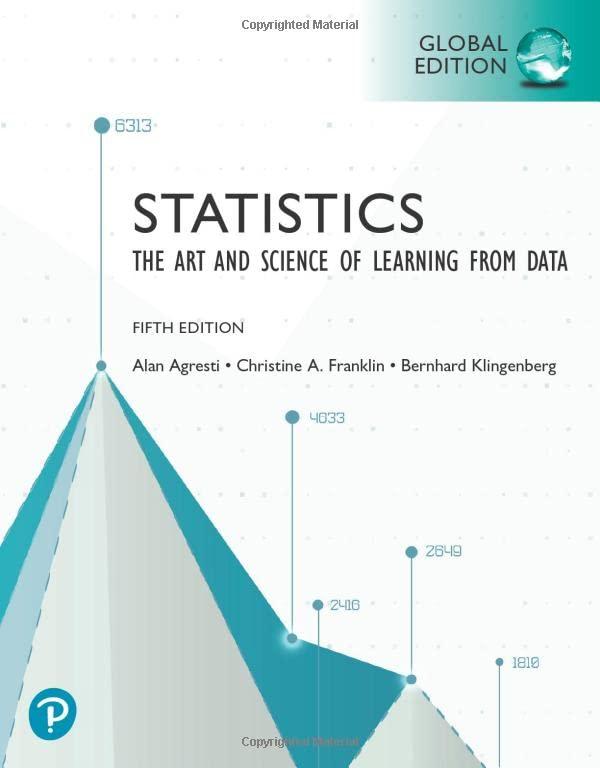A study published in The Sydney Morning Herald in 2019 investigated the effect of financial incentives on
Question:
A study published in The Sydney Morning Herald in 2019 investigated the effect of financial incentives on performance scores of students. As part of the study, 50 schools having students of fifth grade were randomly assigned to one of the two treatment groups. One group of students (25 schools) were given $2 per homework problem that they mastered; the other (25 schools)
was given a moral lecture on the importance of mastering maths. The outcome of interest of the study was student performance two years after the incentives were stopped.
After discontinuation of incentives, 17% of students in the financial incentive group reported scores at or above the proficiency level for their grade in maths, compared to 13.5% of the group completing their homework. Assume that the observed difference in performance improvement rates between the groups (17%-13.5% = 3.5%) is statistically significant. What does it mean to be statistically significant? (Choose the best option from a to d).
a. 14.5% was calculated using statistical techniques.
b. We know that if financial incentive were given to all students, 14.5% would perform better.
c. Financial incentive was offered to 14.5% more students in the study than the non school going students who were working somewhere.
d. The observed difference of 14.5% is so large that it is unlikely to have occurred by chance only.
Step by Step Answer:

Statistics The Art And Science Of Learning From Data
ISBN: 9781292444765
5th Global Edition
Authors: Alan Agresti, Christine A. Franklin, Bernhard Klingenberg





